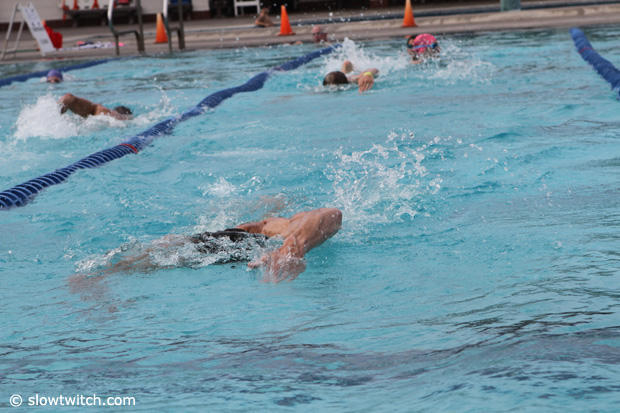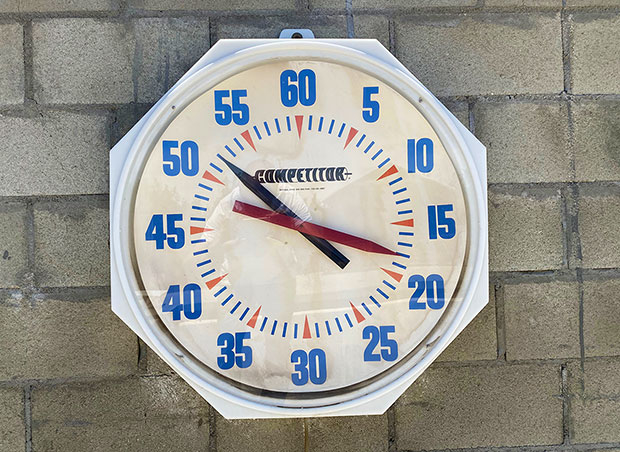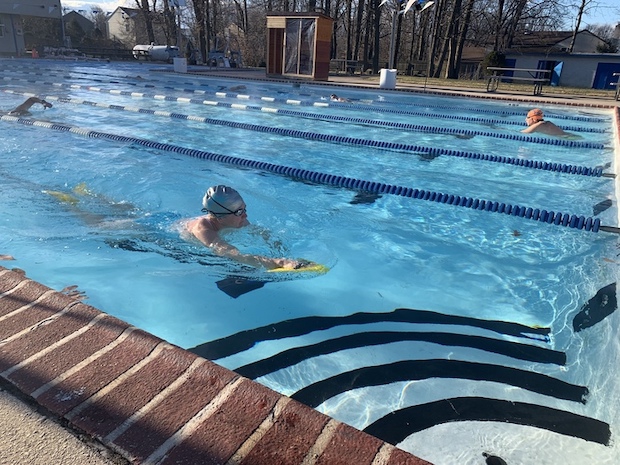Guppy Challenge Week 2
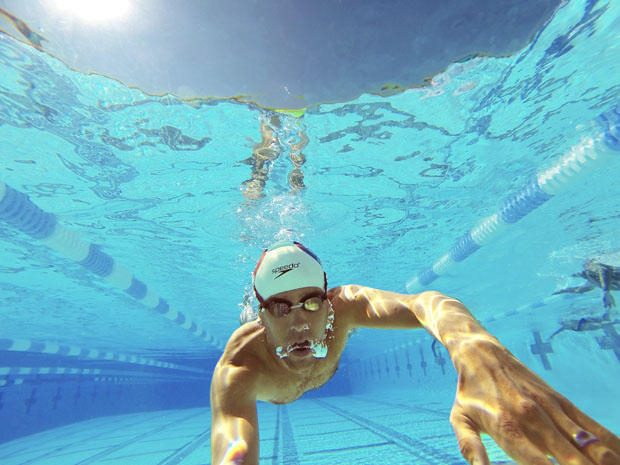
It’s Week 2 of the Guppy Challenge, and today we’re going to do more work on body position. Remember, this is the one leg in triathlon where technique trumps fitness. You can swim as many yards as you want but if you don’t fix the technical issues with your stroke you’ll always be speed-limited. It’s kind of like putting a battleship engine in a tugboat – tugboats can only go so fast, regardless of horsepower.
For those who don’t want to read my blather and just want the workouts, they’re here. Now for the blather.
One of the most frequent body position issues that adult onset swimmers face is getting the head down when it’s in the water. The higher the head, the more the legs sink, and you need your legs to be on the surface. If you don’t ever feel your feet breaking the surface of the water there’s a pretty good chance they’re too low, and a high head position is a likely culprit. For sure, there are no “sinkers” in swimming. It’s not your morphology. It may be your head position.
This week, there’s a drill to help you keep your head low in the water. In fact it’s not a drill, exactly, it’s just swimming with attention paid to keeping one goggle eyecup in the water while taking a breath.
The other thing we’ll introduce this week is doing some of your swimming with a swim buoy. Not paddles, just the buoy. You may find this awkward at first if you’re not used to it. Don’t kick when you’ve got that buoy between your thighs. Keep your feet together. You can bind your ankles, but if you find that a difficult task just swim with a buoy between your thighs. If you’re fishtailing when you swim, count your blessings. This means there’s a speed improvement ahead for you! You’ll want to make whatever changes you need in order to stop that fishtailing, and when you make those changes you’ll be less of a tugboat and more of a speedboat.
If you do fishtail with that buoy between your thighs, and with your feet together, it’s likely because you’re bending at the waist when you breathe and this causes your feet to splay. That buoy will uncover this stroke flaw (if you are disciplined about keeping your feet together). Instead of bending at the waist to breathe, what you want is for your entire body to roll, like a log. You’ll know when you’re doing it right because remain aligned with that buoy installed between your legs, no fishtailing, no leg splay.
So many problems are solved when you learn how to breathe properly during swimming, and some swim coaches love center-mount snorkels because it reminds swimmers what good body position is. When you’re adept at taking your breaths your body position isn’t going to change much whether you’re swimming with that snorkel or not. But just putting that buoy between your legs helps uncover that flaw in your technique.
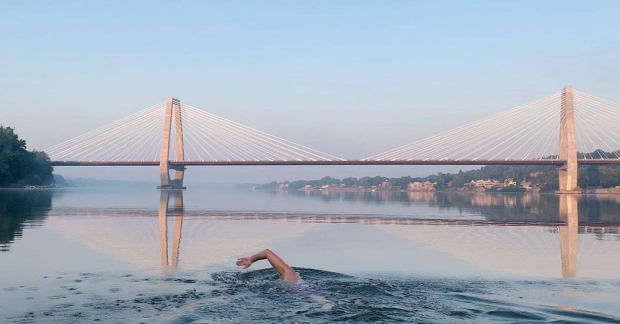
In these early days of the Guppy Challenge unmasking these stroke problems that we’ve papered over since becoming triathletes is our goal. If we’re adult onset swimmers we’ve figured out how to get rough 1.5km, 1.2m, or 2.4mi with our slipshod techniques held together with duct tape. We have tugboat hulls. Pulling more water, or pulling it harder, won’t overcome that hull shape. But just imagine this: If a champion swimmer’s brain, and proprioception, and body awareness, and technical expertise, was placed into your body, think how fast you would go! That is not the case for you in the bike or run. That makes really fast swimming tantalizingly close for you and I.
There are three workouts for Week-2 of the Guppy Challenge. But I’ve told you that I’ll give you an extra credit workout. Here it is, and it’s not a workout per se, but a motif I use to keep me interested in the set. For lack of a better term let’s call it Clock Play. I pick a leave interval that invites a progression around the face of the clock. For example, if I swim 50s, and I leave on the :55, then I begin at the top (remember leave interval nomenclature?), then I leave on the :55, then the :50, then the :45. Using this motif I swim 12×50 yards before the clock is back “on the top.” It gives me the feeling of progression, rather than repetition. I might swim 200s leaving on the 3:10, or the 3:05. If I swim 6 x 200yd, leaving on the 3:10, then I leave on the top, on the 3:10, the next one on the 3:20, and by the time I’m back “on the top” I’ve done all 6 of my 200s.
Of course, and as you know, the Guppy Challenge is produced in partnership with FORM goggles this year, and the leave interval is not necessary if you have a product like FORM that grants you an elegant way to swim with a prescribed rest. FORM has its own way of making sets interesting, and one does not need to resort to Clock Play.
If you run through the 3 Guppy Challenge workouts and you want to do a 4th, why don’t you pick a challenging, but achievable, leave interval for a nice, meaty set. Do a short warmup, maybe 300 yards, rest a couple of minutes, and just make that set your workout. Swim your way around the face of the clock.


